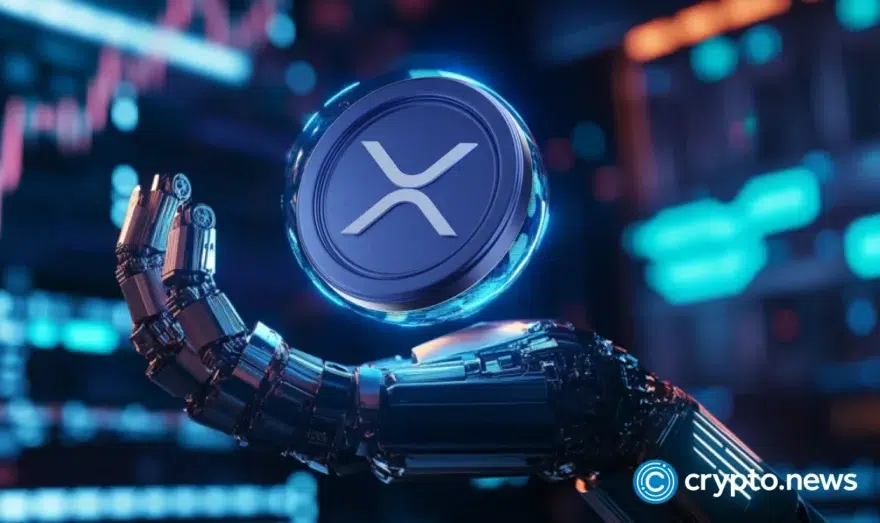Could Derivatives Trading Be the Solution to Crypto’s Volatility?

Over the years, the crypto ecosystem has had excruciating volatility, which has wedged a focus on derivatives trading to try and curtail the situation. Crypto derivatives trading has grown over the years and has positioned itself as a solution to the bitter ends of market volatility. Derivatives trading matches the crypto market’s volatility as digital currencies continue to gain popularity, becoming investment assets and mediums of exchange in financial transactions.
What Are Derivatives in Crypto?
There are different types of derivatives trading that traders could juggle around, like crypto futures, crypto options, and perpetual contracts. These derivatives give different ways a trader could manipulate the market and significantly mitigate losses.
Derivatives trading describes any contract, not necessarily in the crypto market, with a value determined by an underlying asset. Just like in traditional financial markets, the name derivatives mean that they derive their value from investments such as stocks, bonds, interest rates, fiat currencies, and cryptocurrencies.
Derivatives crypto trading works in a way that a buyer and a seller enter into a contract to sell an underlying cryptocurrency. In that case, derivatives only rely on the underlying asset’s value and cannot have inherent value. As such, a Bitcoin derivative depends on and obtains value from the value of bitcoin.
There are different types of derivatives trades in the crypto network, but the question remains, could derivatives trading be the solution to crypto’s volatility?
Let’s take a deeper look at the different types of derivative trades.
Crypto Futures
Crypto futures involve a buyer and a seller with an agreement to sell a digital asset in the future. The two parties agree on a specific date and amount ahead of time. Both traders have similar terms, but the contract details may vary. Futures trading involves predicting future price movements and market sentiments.
Futures trading does not guarantee a gain, and sometimes traders may lose depending on future price changes of a digital asset. For example, if the current price of BTC is at $20,000, a derivative trader may buy or sell futures contracts in anticipation of either a price decline or an increase.
If a buyer purchases a crypto futures contract worth one Bitcoin ($20,000) and it increases to $30,000 by the time the contract closes, the buyer will have made $10,000. In case the price plummets to $15,000 by the time of the contract’s closure, the buyer will have suffered a loss of $5,000.
Crypto Options
Crypto options also allow traders to purchase or sell cryptocurrencies at a specific price on a future date. Crypto options also allow buyers not to buy the asset if they choose. A trader could select a call option that will enable him to buy an asset on a given date or a put option that allows him to sell an asset on a given date.
However, crypto options traders have to pay fees to buy a contract. A trader will incur the cost to enter a contract, for example, if a crypto option costs $500 and above the actual price of the asset they want to buy. For this reason, crypto options are not the most preferred derivative trading decision because the trader must pay a fee regardless of the trade outcome. Nonetheless, traders could exercise their right not to fulfill the contract if it doesn’t go their way, but the fees paid to purchase the contract is not refundable.
Crypto Perpetual Contracts
Crypto perpetual contracts are the most popular crypto derivatives because, unlike futures and options, they do not have an expiry date. For this reason, a trader can hold positions for as long as they wish, so long as they pay holding fees, referred to as funding rate. The trader’s account should also have a margin – a minimum amount required.
Reasons Why Derivative Trading Could Be the Solution to Crypto’s Volatility
Crypto’s market volatility has faced its share of significant ups and downs, which makes it hard for traders to traverse the crypto ecosystem. So, how will derivative trading be the solution to the market’s volatility?
For Crypto Futures
Before indulging in futures, a trader needs to determine the contract’s duration. Afterward, the trader must choose their preferred duration in an exchange, between weekly, bi-weekly, quarterly options, etc.
Depending on their choice, for example, a trader can go long, bet that Bitcoin will increase, or go short, bet that Bitcoin will decrease. The exchange will match a trader with someone who chose the opposite direction in betting. When settling the bet, one trader will have to give up their funds depending on the volatility of Bitcoin.
Crypto futures come in handy when trading because a trader doesn’t have to enter the market with its current value but can bet on how the market will fare. If a trader’s bet goes in their favor, they count profits.
For Crypto Options
Unlike futures, traders can utilize options to place a call option, giving them the right to buy a virtual currency at an agreed price upon contract expiry. A trader needs to place a put option to sell Bitcoin at an agreed price once the contract ends.
For example, if a trader places a monthly-expiry call option for Bitcoin at $20,000, and the price rises to $25,000, he will likely exercise his right to purchase it and make a profit. This move helps traders maneuver their way through crypto’s volatility and still make a profit.
Nonetheless, if the price plummets at the end of the month, the trader will evade any losses by letting the option expire. However, the trader will have to pay the premium he initially agreed to pay during the contract.
For Perpetual Contracts
Traders can either go long or short depending on their take on the future price of the market. A positive funding rate occurs when many traders have long positions, and the price of perpetual contracts rises incrementally above the spot price. For this reason, all long positions must pay all short positions. Furthermore, for a negative funding rate, all short positions must pay long positions.
Even as the market fluctuates, incentive traders employ perpetual contracts to close long positions. Therefore, opening short positions brings the asset’s price, like Bitcoin, back to its actual market price.
How Crypto derivative Trading Helps During Crypto Volatility
Increase Liquidity
Crypto derivatives tend to increase liquidity – how easily orders can get transacted within a market without affecting the price of an asset. For this reason, increased liquidity drives high supply and demand for assets, easing accessibility for buyers and sellers.
Increasing liquidity means less risk because someone is always willing to take the other side of a position. Moreover, it lowers transaction costs, slippage is lesser, and market conditions get more favorable.
Mitigates Risks
Crypto derivatives trading shield a trader’s portfolio from unexpected risk due to high volatility in the crypto market. A derivative market aims to attract more professional traders and institutional investors since it lessens the risk brought about by a portfolio’s exposure to tail-risk incidents.
Most importantly, traders could take advantage of derivatives trading to predict risk, particularly during unclear market conditions like when option prices are typically overbought.
Optimized Price Discovery
Regarding crypto’s market volatility, traders could take advantage of crypto derivatives by determining the current price of a particular digital asset. In Layman’s terms, crypto derivatives could push the optimization of price discovery by enabling traders to either go short or long. As a result, it boosts traders ‘price reliability and makes the market more efficient.
Conclusion
Crypto’s volatility has caused significant impacts on the crypto ecosystem, which makes crypto derivatives a haven to help maneuver through the unbearable market. Investors also utilize derivatives to hedge their portfolios from adverse market movements. Traders could open positions that are in opposite or negative correlation to their current positions; it significantly mitigates potential losses.
Besides, speculating crypto’s future price through crypto derivatives gives traders a better advantage through adverse market movements if the market goes in their favor. All in all, crypto derivatives trading is the solution the crypto realm requires to combat crypto’s volatility.















